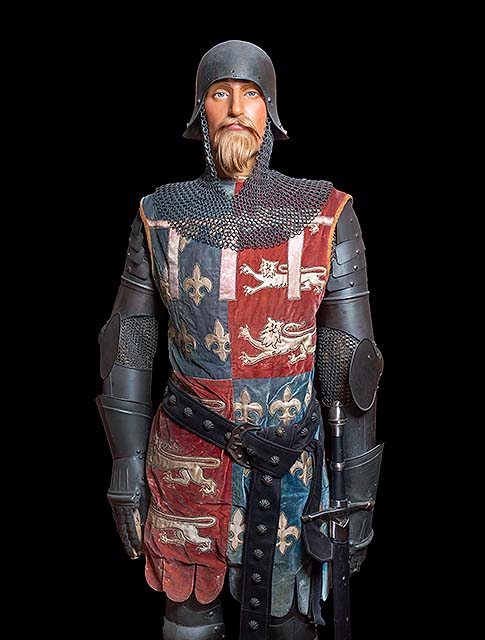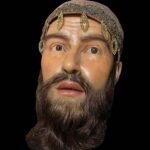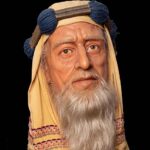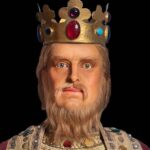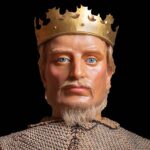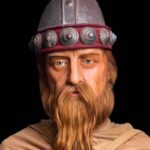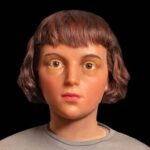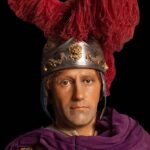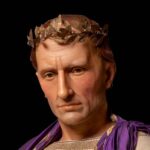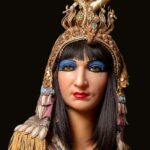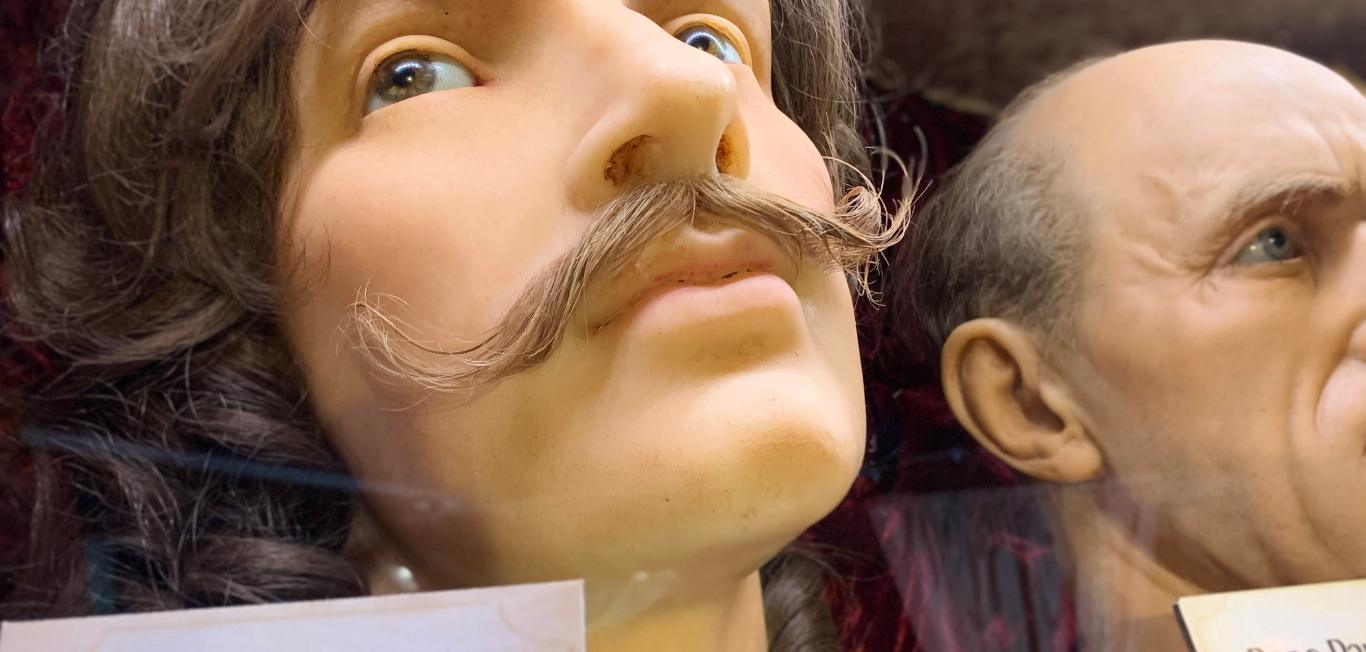Who Was Edward the Black Prince?
Some may ask who the Black Prince who was famous for wearing all-black armor and trouncing his enemies was. Well, Edward the Black Prince, also known as Edward of Woodstock, was a famous successor to the English throne in the mid-1300s. Born in 1330 as the first son of King Edward III, the Black Prince, who was famous as a renowned military general, fought in the Hundred Years’ War against the French and won the two most famous victories during the first phase of the war.
Interesting Facts
Edward the Black Prince was a seven-year-old in a full suit of armor.
He was gifted a suit of armor when he was only seven years old. This would foreshadow his future as a great military leader and tactician.
The Black Prince was gifted his first additional title at three years old.
In 1333, just three years after his birth, Edward the Black Prince gained the title of Earl of Chester from his father, King Edward III.
He engaged in his first battle before he was 17 years old.
The Black Prince led armies and secured victory for England at the Battle of Crécy in 1346, just after his 16th birthday.
King Edward III and Queen Philippa of Hainault gave the Black Prince many siblings.
The Black Prince had 10 siblings, but sadly two died of the bubonic plague in 1348 when he was 18.
Edward of Woodstock’s most famous moniker may not be based on fact.
Today, Edward of Woodstock is known most commonly as Edward the Black Prince, which has been attributed to his wearing all-black armor. However, there is no proof that he ever wore this armor, save the mention of it in Richard Grafton’s chronicle of England from 1569, nearly 200 years after the Black Prince’s death.
He helped win two of the most significant victories for England in the Hundred Years’ War.
The Black Prince led the English armies to victory in the Battles of Crécy and Poitiers against French forces. These were vital English successes in the first phase of the Hundred Years’ War that won land and power for his father King Edward III.
Early Life of Edward the Black Prince
Edward the Black Prince was born Edward, son of King Edward III of England and Queen Philippa of Hainault, on June 15, 1330, in Woodstock near Oxford. He was the eldest son of the king and immediately destined for greatness, even if that greatness was only a formality of his title as heir to the throne of England. However, Edward of Woodstock would prove that he wasn’t merely born into the title but worthy of it.
Thanks to his connections, the Black Prince was made Earl of Chester and gifted the title and salary of the Duke of Cornwall very early in life. His father passed this second title onto his son after the death of the Duke of Cornwall in 1337. By the time the Black Prince was 13, he was also given the title of Prince of Wales, collecting a total of three titles by this young age. Two years later, in 1345, King Edward III acknowledged his son’s growing military skill by knighting him as part of the English army.
DID YOU KNOW?
By the time the Black Prince was 13, he was also given the title of Prince of Wales, collecting a total of three titles by this young age.
The following year, only three years after the bequeathing of his final title, when the Black Prince was 16, he finally proved himself worthy of all this acknowledgment. He showed himself to be an incredible military leader in the Battle of Crécy, where he defeated the French in 1346. It was this battle that kicked off the Black Prince’s career as a fantastic military leader, which would continue for the rest of his life.
Personal Life of Edward the Black Prince
In between all his military successes, Edward the Black Prince had a personal life filled with drama. In 1361, five years after his second famous victory at Poitiers, the Black Prince married his father’s cousin Joan, the Countess of Kent. They would go on to have two sons: Edward and Richard. Edward died at six years old, and Richard grew up to become King Richard II, becoming the heir to the English throne after the death of the Black Prince in 1376. His marriage to Joan made him a stepfather to her children from her two previous marriages, including Thomas Holland; John, the Duke of Exeter; Matilda Holland, and Joan Holland.
However, the Black Prince allegedly did not only have children with his wife Joan. It is suspected that he fathered several illegitimate children with a series of mistresses prior to his marriage to Joan. One of these alleged affairs, with Edith of Willesford, supposedly resulted in the birth of his son Roger of Clarendon. Some believe that several other mistresses gave the Black Prince more children, including Edward, Sir John Sounder, and Sir Charles Fitz Edward.
Late in Life
After his success at the Battle of Crécy and his acceptance into the Order of the Garter in 1348, Edward the Black Prince was not done making his mark. In 1350, the Black Prince engaged in battle yet again at Winchelsea and defeated the Castilian fleet of Don Carlos de la Cerda. Five years later, the Black Prince was acknowledged for all his successes when he became the King’s Lieutenant for Gascony and led the English army in invading France from Aquitaine.
This success at Aquitaine would lead the Black Prince to his subsequent major victory for England in the Hundred Years’ War: winning at the Battle of Poitiers in 1356. Edward the Black Prince succeeded through military acumen and captured the King of France, John II, and his youngest son’s half-brother. This capture and his subsequent honorable treatment of the prisoners would earn him a reputation as a fearful strategist with the finest knightly honor. In 1360, four years after his capture, the king of France signed the Treaty of Bretigny, giving much land and power to the English kingdom.
This treaty marked the high point of the Black Prince’s career. His next military move, the Battle of Najera, was a failure despite the Black Prince’s forces’ success and victory. It was an incredibly expensive battle that landed him in bankruptcy by the end. Following this, the Black Prince suffered a backslide as he contracted an illness in 1366 during a campaign to restore Don Pedro the Cruel to the Castilian throne in Spain. The Black Prince’s health would continue to decline for the rest of his life. Adding to his already declining reputation, the Black Prince returned to France, where he fought dissent against his father King Edward III’s rule, and ordered the execution of thousands of citizens.
Finally, after several years of decline in his reputation and health, the Black Prince died at the Palace of Westminster on June 8, 1376. It is unknown what illness caused the death of the Black Prince, as he suffered from many in his last few years. Some say the cause was old war wounds, others cancer, and still more blame sclerosis or nephritis. However, the most commonly cited reason for his death is dysentery.
The Black Prince’s final resting place is in Canterbury Cathedral, with his burial spot marked by a display of his effigy and original (although not confirmed) black helmet.
The Black Prince’s Legacy
Edward the Black Prince is mainly known in modern times for his distinctive black armor, the helmet of which supposedly still remains at his final resting place today. The imagery of a strong future king dressed all in black has inspired many modern adaptations and first appeared in Richard Grafton’s Chronicle of England (1568). Unfortunately, there is no direct evidence from the Black Prince’s actual life to prove that he wore that iconic black armor. However, his reputation as a great military tactician and king, who sadly never made it to the throne, is 100% proven and remains an incredible legacy all on its own.
DID YOU KNOW?
There is no direct evidence from the Black Prince’s actual life to prove that he wore the iconic black armor.
The most famous victories of the Black Prince occurred during the first phase of the Hundred Years’ War, which lasted from 1337 to 1475. In 1346, he led an army of English, Welsh, and allied troops to crush the combined armies of French, Genoese, and Majorcan forces led by Philip VI at Crécy. Then, in 1356, Edward the Black Prince succeeded again at Poitiers, where he captured King John II of France.
However, even before these triumphs, Edward of Woodstock had proved himself and been knighted by his father, King Edward III, in 1346. A few years later, in 1348, inspired by the tales of King Arthur and his Knights of the Round Table, Edward the Black Prince became one of the 25 founding members of the Order of the Garter, which remains today the oldest Order of Chivalry in Britain.
FAQs
Why was Edward known as the Black Prince?
Edward of Woodstock’s moniker, “the Black Prince,” comes from the iconic suit of all-black armor he is said to have always worn.
What was Edward the Black Prince famous for?
Edward the Black Prince is known today primarily for his recognizable all-black suit of armor, but he was famous in his time for his victories in the Hundred Years’ War against the French at Crécy in 1346 and in Poitiers in 1356.
What happened to Edward of Woodstock?
Edward of Woodstock died in 1376 before he could be crowned King of England, most likely due to dysentery.
Who was the first Black Prince?
The first Black Prince was Edward of Woodstock, who was born in 1327 and died in 1376.
How old was Edward the Black Prince when he died?
Edward the Black Prince was 46 years old when he died from an illness (most likely dysentery) before he could be crowned King of England but after his immense victories in the Hundred Years’ War.
